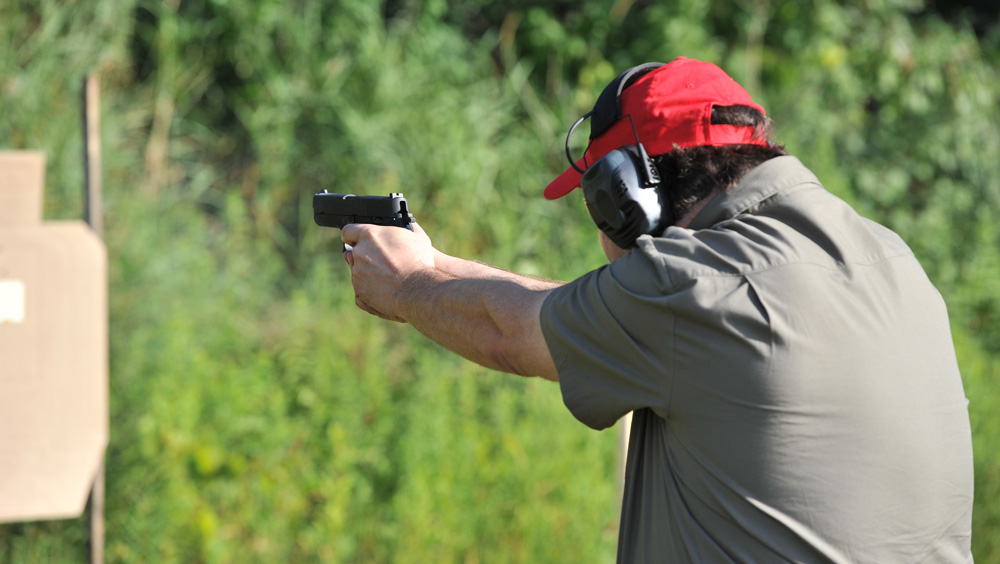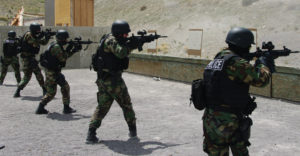

Recent terror attacks in France, Canada and Australia underscore our reasons to be more vigilant, more aware and as prepared as possible should mayhem break out. For many Americans, a key component of that vigilance translates into practicing concealed carry (CC).
At a cafe in Sydney, Australia, a gunman recently held 17 customers and staff hostage for more than 16 hours. Two people were killed during the incident after police stormed the business in an effort to rescue the hostages. The horrific rampage at Charlie Hebdo magazine in Paris, France, this January by two men armed with AK rifles resulted in the slaughter of 12 people and the wounding of 20 others—all for publishing satirical cartoons of Allah.
In Ottawa, Canada, Parliament’s sergeant-at-arms retrieved a pistol from a locked box and killed a threat in the form of a lone gunman.
For a CC holder caught up in an active shooter situation, training experts like Adam Painchaud, senior director at SIG Academy, suggest you look for a way to escape, rather than engage, in order to live to see another day.
“If you are with family and friends, mission number one is to get them and yourself to safety,” Painchaud says. Breaking contact and getting to safety may not be an option, however.
“Only if you are boxed in,” Painchaud says, “then you need to deal with it accordingly.”
A CC holder with a Ruger LCP or J-frame going up against a shooter or shooters with a rifle or shotgun can get themselves in grave danger quickly. In an active shooter situation more than likely you have little time to take cover, let alone time to gear up.
“More than likely the tool you will have on you,” explained Painchaud, “will be a personal protection gun designed for close encounters.” A compact or subcompact with limited ammunition capacity is perfect for self-defense, but is not a match for an assailant or assailants with long arms. Even law enforcement (LE) must often operate in defense mode, responding to situations as they arise.
Get Out Of The Situation

Like Painchaud, all of the trainers interviewed for this story recommend the first course of action be to get out of the situation. There are factors against a CC holder fighting back. Two key issues stand out: lack of training and inadequate tools.
“The important thing is to get training so you are prepared,” says Ken Campbell, a retired 35-year deputy sheriff, Special Response Team Commander and two-term county sheriff, as well as a 20-plus-year Gunsite Instructor. “Thinking ‘this won’t happen to me’ is tantamount to putting your head in the proverbial sand.”
You have a spare tire, a flashlight in the house in case the power goes, so prepare for a lethal encounter because bad things can and will happen to you. “Plan for a lethal event,” added Campbell. “How you respond depends on how you train.”
The second thing all trainers agree on is for a CC holder to know their state’s gun laws on self-defense and to have an attorney lined up. Having an attorney is like having insurance. Just like homeowner’s insurance is used in case of flood, fire or wind damage, an attorney will guide and represent you as any situation is legally sorted out.
Law enforcement is trained to deal with high stress situations—the noise, screams, blood and confusion. Regular Joe Citizen with a concealed carry permit, who has perhaps taken a concealed carry course and maybe a beginner pistol shooting course, does not have the level of training to thwart a situation where there is an active shooter.
In an active shooter situation, nothing is black and white. Good guys can easily look like bad guys and vice-versa. A situation could evolve in, say, a shopping mall, where you are boxed in with no avenue to escape. How do you know if that person with a gun is an off duty police officer caught up in the situation just like you? If you engage a threat in a crowded area, how do you ensure a missed shot does not hit an innocent bystander?
Shooting In Progress
When first responders arrive, they may have little-to-no information about the situation. All they know is there is a shooting in progress.
“If you have the ability to talk to 911 or if someone in your group can be on the phone with 911, relay all the information you can to the authorities,” explains Painchaud. The more information law enforcement has, the better they can handle the situation. Tell them details: “I am a white, bald guy wearing a blue hoodie and sneakers near the pretzel stand.” SIG Academy actually offers a training course called Active Shooter Response that teaches tactics for a first responder or a CC holder caught in the crossfire.
“No one ever knows what the police know or don’t know when they arrive,” says Sara Ahrens, former patrol sergeant, SWAT team supervisor and firearms instructor. When LE does arrive, their mindset is hard to predict. “Did the police happen upon the situation, did the concealed carry holder request somebody call the police or did a passerby call it in?” she asks. Ahrens’ best advice to a CC holder is to remain cognizant of their surroundings. “Tunnel vision and auditory exclusion easily happen in high-stress situations. Watch for the police to arrive and immediately identify yourself as a concealed carry holder,” she advises. LE will then tell you what to do and how to do it.
Massad Ayoob states it plainly: “Obey the commands of the officer. Expect to be disarmed. The cop doesn’t know who’s who.” Ayoob is director of the Massad Ayoob Group, a former LE officer, firearms expert and has written numerous books on armed encounters, including his recently released, Deadly Force: Understanding Your Right to Self Defense, published by Gun Digest books.
Shootrite Firearms Academy Director Tiger McKee recommends, if possible, to have your weapon holstered when LE arrives.
“If that’s not a good option, then you need to comply with their demands immediately. No trying to explain. When law enforcement says to drop the weapon, you drop it. No setting it down gently. Keep your mouth shut, do what they tell you,” McKee advises.
In many instances, the only thing LE knows upon arrival is that there are shots fired, adds McKee, and will tend to treat everyone as a threat until things are sorted out.
Firearms training should be part of every gun owner’s plan to protect themselves and their families. Any reputable gun training course should not only teach safe firearms handling and shooting techniques, but also what you as an armed citizen can expect after an incident where you are forced to unholster your firearm. When the dust has settled, and law enforcement officials have sorted out the situation, then it comes to answering questions.
“That’s a whole ’nother subject,” quipped Mckee. This is the point when your lawyer can be most helpful. When the situation ends, and it will, the nightmare may continue. Retain a good lawyer.
Terrorism in the United States
The fact is: terrorists have already attacked the United States. The aftermath of 9/11 spawned a new type of terrorist, the homegrown kind. These groups of individuals or loners who might or might not commit Jihad in the strictest sense, are people looking for a cause. It’s not surprising that concealed carry permit applications and firearms purchases are at historic levels. Even the District of Columbia is issuing concealed carry permits. Eased restrictions on gun laws are now the norm, and though this rally to arms is a right, it comes with responsibility.
Our nation’s law enforcement officers are selfless and courageous, but there is that time—seconds, minutes, hours—before they are able to respond to a situation. Caught up in that moment between a terrorist or criminal starting their rampage and when the cavalry arrives, you the CC holder have the opportunity to turn the tables and help yourself and others by moving into action and, in essence, self-rescue. But with self-rescue comes risks and responsibilities. Be prepared.
This article appeared in the March 2015 issue of Gun Digest the Magazine. Click here to download the issue.
 Also Check Out:
Also Check Out:
Deadly Force: Understanding Your Right to Self Defense
Among the topics discussed, this guide will help you understand any legal and ethical issues concerning the use of lethal force by private citizens. You’ll also learn about the social and psychological issues surrounding the use of lethal force for self-defense or in defense of others. In addition to exploring these issues, Ayoob also discusses the steps a responsible armed citizen can and should take in order to properly prepare for or help mitigate a lethal force situation. Learn more


![Best Concealed Carry Guns In 2025 [Field Tested] Wilson Combat EDC X9S 1](https://gundigest.com/wp-content/uploads/Wilson-Combat-EDC-X9S-1-324x160.jpg)


![Best 9mm Carbine: Affordable PCCs [Tested] Ruger Carbine Shooting](https://gundigest.com/wp-content/uploads/Ruger-Carbine-Shooting-100x70.jpg)
![Best AR-15: Top Options Available Today [Field Tested] Harrington and Richardson PSA XM177E2 feature](https://gundigest.com/wp-content/uploads/Harrington-and-Richardson-PSA-XM177E2-feature-100x70.jpg)
